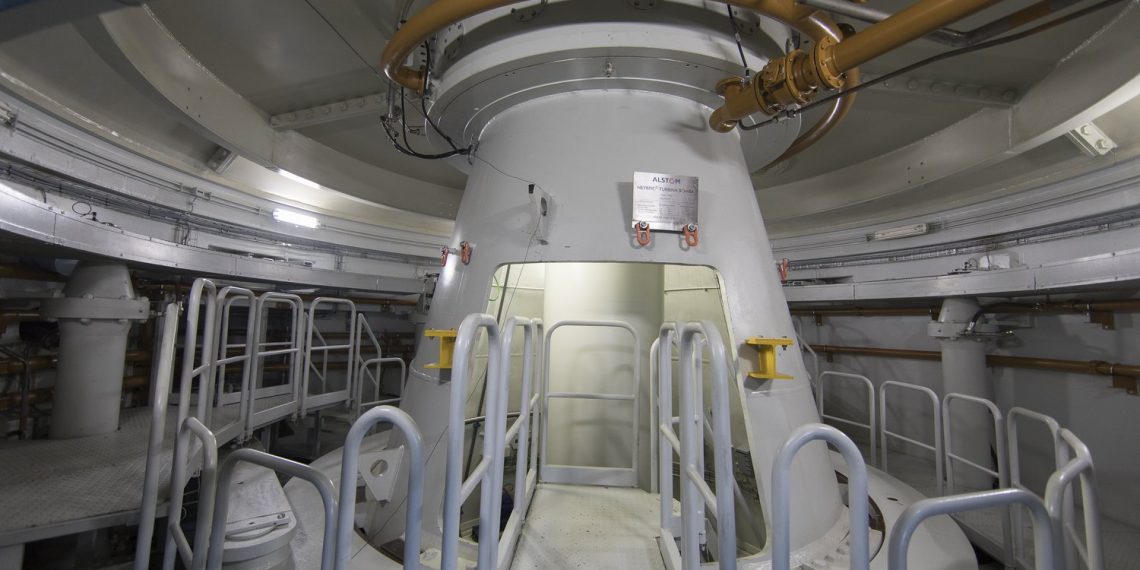The XFLEX HYDRO project focused on developing technological solutions to improve flexibility in the European energy system. Results translate into more efficient and flexible hydroelectric power plants to boost energy transition. The project, with INESC TEC contribution, tested the technologies in three Portuguese plants.
Taking safe steps towards the decarbonisation of the energy sector means ensuring that the growing influence of renewable energy sources in the power grid does not cause disruption, and that the system works smoothly. Basically, it is essential to ensure that the grid – which is less flexible thanks to the reduced influence of non-renewables on the “balance” – operates without interruptions, and that when we turn on the switch at home, requesting more energy, it can comply with our request.
And this is where hydroelectric power can be a crucial ally: the generation of electricity in pumped-storage dams has been used for decades to support the management of the power system. Flexible, renewable and with low carbon emissions, it provides something vital to the grid: predictability, efficiency, and high installed power. But what if it were possible to improve the performance of the plants and improve the grid’s flexibility? This is what the European project XFLEX HYDRO aimed to achieve, by introducing innovative features in European plants. INESC TEC was one of the 19 consortium partners.
After four years, there are some good news. The hardware and software upgrades carried out in seven European hydroelectric plants – three of them in Portugal – made it possible to reduce indirect CO2 emissions, increase the production of renewable energy, and extend the useful life of the equipment. “For a successful modernisation, it is crucial to obtain comprehensive knowledge of the limits and essential operating dynamics, and to optimise predictive maintenance to fully exploit the flexibility of the machines, ensuring its reliability”, explained Carlos Moreira, researcher at INESC TEC.
In Portugal, the hydroelectric power plants of Venda Nova III, Alqueva, Alto Lindoso and Caniçada tested new digital-based technological systems associated with existing electromechanical equipment. Plants like these can act as “gatekeepers”: they pump water from a lower reservoir to an upper reservoir when there is excess electricity production capacity in periods of low consumption; and this water, almost like a battery, is ready to be used later, in times of higher consumption. The work developed by the project can help in this equation, as variable speed turbine-pump groups can optimise this storage process.
Results may expand into other plants.
The XFLEX HYDRO was able to address two dimensions: on the one hand, it made the hydroelectric plants’ real-time responsiveness to grid variations more flexible and improved; on the other hand, it optimised equipment to avoid faster wear and. Introducing a hydraulic short circuit, which allows to extend the operational range of the platforms and to use turbines and pumps simultaneously, increases pressure on the structure. To mitigate this impact, the project developed digital modelling and simulation solutions, and studied how the plant should operate to reduce maintenance needs and plant downtime. This allows to increase efficiency and help minimise stresses on the equipment, so it can operate more flexibly.
Let’s look at the results in Portugal: in the Frades 2 plant, the implementation of variable speed technology combined with the hydraulic short circuit added 70% of regulation capacity during pumping and 17% during production. At Alqueva, the optimised damage management improved the availability of the plant by 1% and increased maintenance intervals by up to 10%. At Alto Lindoso, “a set of advanced numerical simulations demonstrated the feasibility” of making the operation more flexible.
XFLEX HYDRO aimed to contribute to a low-carbon power system, towards meeting the proposed targets for renewable energy production: 32% by 2030 (in the case of Europe). The technologies demonstrated are representative of the European water-technologies portfolio, so the developments can be replicated for virtually all types of hydroelectric power plants in Europe.
In 2022, the EU produced 2641 TWh (terawatt-hour) of electricity and almost 40% came from renewable sources. And although the hydropower generation declined due to periods of extreme drought in 2022, it still represents more than 11% of the total installed electricity capacity in the EU. In Portugal, concerning last year, water production with pumping broke records in Portuguese dams.
The project that is now ending was formally presented by the European Commission at the UN Climate Change Conference (COP 25). in December 2018, and received €18M in funding. In addition to Carlos Moreira, INESC TEC researchers Helena Vasconcelos, Manuel Castro, Luís Guimarães, Armando Leitão and Flávia Barbosa were involved in XFLEX HYDRO.
The researcher mentioned in this news piece is associated with INESC TEC and UP-FEUP



 News, current topics, curiosities and so much more about INESC TEC and its community!
News, current topics, curiosities and so much more about INESC TEC and its community!